BEST LIGHTWEIGHT WHEELS FOR CLIMBING

If you regularly ride steep, long climbs, you should consider getting the best lightweight wheels or climbing wheels you can find.
The best lightweight wheels for climbing are stiff, aerodynamic, comfortable, and light. Those characteristics will help you convert your power and hard work as efficiently as possible going up while confidently handling the high speeds and frequent cornering coming down.
But there are dedicated climbing wheels and wheels that climb and perform well on a range of terrain and surfaces.
In this post, I’ll share with you the kind of riding I believe best suits climbing wheels, what matters most when choosing lightweight wheels, and our reviews of those we’ve tested from some of the leading wheelmakers.
In The Know Cycling is ad-free, subscription-free, and reader-supported. If you want to help keep it rolling without any added cost to you, buy your gear and kit after clicking the store links on the site. When you do, we may earn an affiliate commission that will help me cover the expenses to create and publish our independent, comprehensive and comparative reviews. Thank you, Steve. Learn more.
BEST PERFORMER – ROVAL TERRA CLX II
While the Roval Terra CLX II is a versatile road and gravel wheelset, it’s the best road climbing wheelset we’ve tested and the least expensive among the top performers in this category. Roval also makes the Alpinist, its designated climbing wheelset, but the Terra (1278g on my scale with a HG freehub) is just as light and has wider rims, allowing you to run wider tires for more comfort without any aero loss.
Yet, despite their weight and relatively low profile (33.0mm measured), they are also great all-around road and racing wheels. With 28mm Continental Grand Prix 5000 S TR tires inflated in the low 50psi range (25.3mm internal width, 68kg rider weight), you’ve got a race-ready setup.
Stiff, responsive, and compliant, they handle better than most riding switchbacks or just freewheeling downhill at high speed. The DT Swiss 180 EXP hub is also a smooth, quiet partner.
At US$2500, £2500, or €2850 retail price, while not cheap, you can order the Roval Terra CLX II through these links to Competitive Cyclist, Performance Bike, and BikeInn, each an online store I’ve vetted and recommend for their competitive prices, selection, customer satisfaction, and reader support.
You can read my full review here.
WHAT YOU NEED TO KNOW ABOUT THE LIGHTWEIGHT WHEELS
Click on any red statement below to go directly to that part of the post
Find what you're looking for at In The Know Cycling's Know's Shop
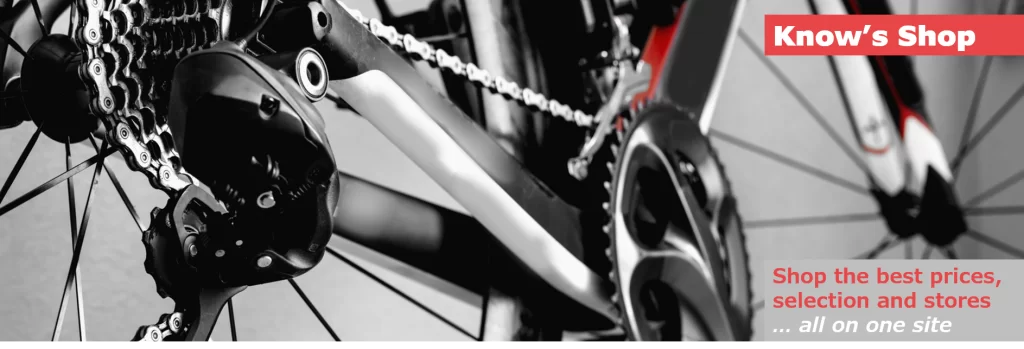
- Compare prices on in-stock cycling gear at 15 of my top-ranked stores
- Choose from over 75,000 bikes, wheels, components, clothing, electronics, and other kit
- Save money and time while supporting the site when you buy at a store after clicking on a link
WHO CLIMBING WHEELS ARE BEST FOR
Climbing wheels are for riders who do long rides that are centered on climbing up and going down 7% and steeper pitches that go on for kilometers or miles at a time.
I don’t mean those of us who regularly ride “rollers,” those 4-5%, half-kilometer or quarter-mile hills that might total 5 km or miles during the course of a 40 to 75 km or mile ride. Or even those rides that might include a half km or even a half-mile climb that averages 7% during your ride.
You could certainly ride lightweight wheels on those kinds of rides to give you some advantage going up steeper sections. But you must ask yourself whether what you gain on the hills with climbing or lightweight wheels is worth what you lose on the flatter sections and downhills when you don’t ride more aero, all-around ones.
My experience? I really miss the deeper wheelset on the flats and going down the rollers when I’m riding climbing wheels or any lower profile wheelset on all but the steepest climbs and long rides.
For example, I did a 125 mile/200 km long ride with 8500 feet/2600 meters of climbing on a set of 25mm deep, 1350 gram lightweight wheels that included two steep, long, tough alpine climbs that exceeded 12% on average. The wheels were great on those climbs, the best I had ridden from that model year, but I think I worked just as hard, if not harder keeping up with the group on the far more frequent flat and rolling sections because I didn’t have deeper wheels.
Several months later, I did a steeper, shorter route, a 100 mile/160 km ride with about 11,000 feet/3350 meters of climbing on a 1425 gram, 33mm deep set of wheels. It seemed that I was always climbing or going downhill on that ride. I’m glad I was riding those wheels.
As all-around disc brake wheels have entered their 4th generation, they are getting lighter and deeper. Several that are now 45-50mm deep weigh between 1400 and 1500 grams. With a deeper carbon rim, they tend to be stiffer and transfer your power better than shallower, lighter ones do.
The best lightweight wheels for climbing have become deeper, some now close to 40mm, whereas several years ago, most were in the low 30mm range.
To set themselves apart, or at least to notice a performance difference compared to the latest all-around wheels, today’s climbing wheels need to be 100 to 150 grams lighter than those all-arounders while being deep enough to feel essentially as stiff.
Where I ride and even when I do all but the steepest routes with 1,000 feet or more of elevation every 10 miles of riding (300 meters per 15 kilometers), all-around road disc wheels are the way to go. I’ve reviewed the best of those wheels here.
If, on the other hand, I lived at the foot of or regularly visited the Rockies, Sierras, Pyrenees, Alps, etc., I’d definitely want to be able to put a set of lightweight wheels for climbing on my bike for those days when I’m doing those steep, long alpine climbs and descents.
Descending is not often considered when choosing climbing wheels. But, to do it fast and safely, aero and crosswind performance, stiffness, comfort, and handling are key to enjoying the ride downhill that you earned working so hard going uphill.
Of course, you could always have a support vehicle follow you and quickly change your climbing wheels when you hit the big mountains and switch back when you get off them.
What? Are your friends or partner not into that? Mine either.
Regardless, climbing wheels are also for those of you with deep pockets. Dedicated wheels for climbing may be the third or fourth wheelset in your quiver. You may still have stock wheels that came with your bike or another alloy set for all-weather training. You may also have all-around or aero wheels (or both) for most of your training, group riding, road racing, or TT riding. Maybe a gravel wheelset or some MTB wheels for off-road adventures.
We’re seeing more and more all-road wheels available that climb and descend well on well-paved, poorly-paved, and gravel roads. Some are nearly as good on steep pitches as pure climbers, and their versatility can serve you well, even though they’re not as fast as the best all-around wheels on and off-road. I’ve included the best climbing all-road wheels in this review.
As most of the best climbing wheels cost at least $2000/£1500/€2000 and many run half again more, it’s not a purchase for those trying to stick to a cycling budget. Lucky you!
LIGHTWEIGHT WHEELS SELECTION CRITERIA
If you believe weight is the primary benefit of riding a dedicated climbing wheelset, is that the primary criterion for choosing between them? Far from it.
When I evaluate wheels, I look at four groups of selection criteria and about 20 specific ones within those groups.
Immediately below, I’ve highlighted the relative importance of those criteria for wheels you’ll want on long, steep climbs and descents vs those for all-around and deeper aero wheels.
As you can see from the criteria I’ve emphasized for picking wheels for the mountains, half of them – aerodynamics, compliance, braking, and rim profile – are not criteria you would consider in choosing what has been traditionally considered a ‘climbing wheelset’. These are important characteristics to ride fast and confidently on the high-speed, steep descents you’ll experience going down a long mountain pass.
In these situations, you’ll want aerodynamic wheels for max speed with rim profiles that keep the bike stable in crosswinds. While most dedicated lightweight wheels for climbing are lower profile than all-arounds, you can still shape the rims to reduce drag and cheat the crosswinds.
You’ll also want compliant wheels going down often rough alpine roads and handle well as you are whipping through the switchbacks. If you are riding rim brake wheels, you’ll want to brake reliably at high downhill speeds and in all weather conditions. You don’t want any fading or degradation in braking on long descents. While this was more important for alloy and carbon rim brake wheels, disc brake rotors on road disc wheels must be aligned well with disc brake calipers and supported by good hydraulic brake systems to make it all work.
For climbing, you might as well take advantage of lightweight wheels, but you also want ones that transfer your energy into power as effectively as possible. That’s why stiffness is emphasized. When you are cranking out 250-400 watts trying to keep upright going up pitches ranging from 7% to 15% for what seems like forever, you want stiff wheels to convert your effort as efficiently as possible to the road.
As I hope you can see, you have different and equally important needs going up and down a long, steep mountain road, and weight is only one of many considerations. That’s why I think “climbing wheels” is a misnomer. Instead, you should consider these as both climbing and descending wheels or lightweight wheels that must perform well in both directions.
Finding wheels that accomplish all of this requires some trade-offs. Very light wheels aren’t usually the stiffest, for example. And aerodynamic wheels to some mean deep dish rims, which aren’t usually the best at handling on windy mountain descents.
There are also some things that you really don’t want to compromise on. Older carbon clinchers have no place on long downhills where you need to do a lot of braking as they can overheat, warp, ruin the wheels, and result in a blowout at speed. I no longer included rim brake wheels in this review as they are generally inferior to disc brake ones.
At the same, you don’t drag your brakes and overheat or warp your rotors.
The heavier you are, the more these criteria matter. You’ll put more energy into the bike going up and will travel at higher speeds and create more braking energy going down. A rider weighing 190lbs or 200lbs or more will want a stiffer wheelset than a 150lb rider with the same watts per kilogram. They will also need more room to brake.
On the other hand, the lighter rider will be more prone to getting pushed around on a windy descent if the wheel’s profile doesn’t handle crosswinds well and will benefit more from an aerodynamic profile that cuts through both crosswinds and the apparent wind created going down a mountain. None of the wheels in this review here are so deep or have rim profiles that cause a big problem, but some are shaped better than others to have no problem except in the strongest winds.
Looking to the pro racing circuit for guidance on climbing and descending wheels is a mistake. The best climbers typically weigh 135 to 145 lbs, have 6% or less body fat, often ride super-light, super-stiff bikes, and put out more than 5 watts/kilo going uphill during a race. They also have support vehicles to give them different wheels or bikes during the race, depending on the terrain.
I’d guess most road cycling enthusiasts have 15-20% body fat (the amount for a “fit body type”), climb at 3 to 4 watts/kilo, and often ride comfortable endurance bikes rather than super stiff or super light race bikes. Sorry to say, the pros and we amateurs live in two different worlds.
Even those of you lighter men and women with natural climber body types, <10% body fat, 4+ w/kg ratios, and on very stiff racing bikes will still finish 10-20% (3-6 minutes on an hour ride) behind pro-level racers on the most challenging climbs. You can draw on lessons from the pros, but buying the same wheels they ride, hoping to get a far better result, is not likely.
If we could buy their genetics, we’d have a better shot.
So with all that as background, let me share with you my evaluation of the best lightweight road disc climbing wheels I’ve tested. If you’re looking for rim brake wheels, I’ve recommended the best for climbing and other categories in this review.
REVIEWS OF LIGHTWEIGHT DISC BRAKE WHEELS FOR CLIMBING
Best Performer
ROVAL TERRA CLX II – AN ALL ROAD WINNER AND BEST CLIMBER
While the Roval Terra CLX II is a versatile road and gravel wheelset, it’s the best road climbing wheelset we’ve tested and the least expensive among the top performers in this category. Roval also makes the Alpinist, its designated climbing wheelset, but the Terra (1278g on my scale with a HG freehub) is just as light and has wider rims, allowing you to run wider tires for more comfort without any aero loss.
This one wheelset excels across a broader range of terrain and surfaces than most other high-performance all-road wheels we’ve tested and does so at a better price.
My fellow tester Miles calls the Roval Terra CLX II “quiver killers” after doing a range of road, gravel, and cyclocross rides and races on them. I used them to “cat up” and keep up on lumpy group road rides and challenging gravel ones. He set some climbing PRs with these wheels while I kept up with my buds on climbs where I typically get dropped.
Despite their weight and relatively low profile (33.0mm measured), they are also great all-around road and racing wheels. With 28mm Continental Grand Prix 5000 S TR tires inflated in the low 50psi range (25.3mm internal width, 68kg rider weight), you’ve got a race-ready setup.
The Terra CLX II wheels’ ability to maintain speed on fast courses surprised us. While you would want deeper wheels for a flat time trial, these Rovals handle better than most of any depth when cornering, on descents, and over rolling terrain. They snap up to speed in sprints, and you can drive them through corners.
Stable in sidewinds, the Terra CLX II is also very compliant. That might be surprising for a wheelset as responsive when accelerating and cornering as these. But given the ample internal rim width, there’s plenty of opportunity to create a comfortable combination with the right tires and inflation pressure.
I rode 28mm Vittoria Corsa Pro TLRs at 60psi on the Terra CLX II for a ride filled with climbs and rollers on cracked, mostly worn pavement that felt supremely comfortable at my touch points. If only my legs and lungs felt half as good!
Roval uses the DT Swiss 180 ratchet EXP internals with ceramic bearings in their CLX II hubs, ones I find roll smoother and quieter when easily and regularly cleaned and greased than DT Swiss’s 240 internals.
If you love to mix it up and ride aggressively, fast, and comfortably on a range of road, gravel, and cyclocross terrain and surfaces, the Roval Terra CLX II with the right tires is an all-road winner.
Note that it’s the Roval Terra CLX II I’ve reviewed here. The first generation Terra CLX (heavier and no longer made), Terra CL (different hub and spokes, heavier), Terra C (different rim, hub, and spokes, considerably heavier), and Terra CLX EVO (dedicated gravel wheels) while less expensive, perform differently enough not to be considered in the same all-road performance discussion with the Terra CLX II.
And at its US$2500, £2500, or €2850 retail price, while not cheap, the Roval Terra CLX II is still less than its climbing competitors in USD. You can order it while supporting the site’s ability to provide more independent reviews like this one at no additional cost to you when you buy it through these links to Competitive Cyclist, Performance Bike, and BikeInn, each an online store I’ve vetted and recommend for their competitive prices, selection, customer satisfaction, and reader support.
ZIPP 353 NSW – VERSATILITY TO A FAULT
Despite a depth that suggests it is an all-around wheelset, the Zipp 353 NSW wheelset doesn’t carry the momentum that the best all-around wheels do and climbs and descends nearly as well as the best, dedicated climbing wheels. It also performs well on everything from smooth paved roads to rough gravel ones.
Indeed, versatility is one of its greatest strengths.
At 1248 to 1268 grams, depending on the hubset you specify, the 353 NSW is almost freakishly light for a non-tubular wheelset of its depth and width. It’s 150 to 200 grams lighter than most of the current generation of tubeless disc carbon wheelsets and only about 100 grams heavier than the lightest, pure climbing ones.
It’s stiff, handles extremely well, and is supremely comfortable.
And boy, does it climb! I almost had to check that I hadn’t left my water bottle or saddle bag at home when I hit the hill a quarter-mile from my house the first time out.
Miles blew away the competition when he rode the 353 NSW in the Crank the Kanc race with a 5-mile, 7% uphill finish. Since the race starts with a 10-mile 1-2% grade, he put these Zipps on his Giant Propel aero bike. It turned that bike into a legitimate climber. That’s versatility for you.
We didn’t experience any effects of crosswinds riding the Zipp 353 NSW on flat and downhill terrain. While its rims have the sawtooth pattern designed to neutralize them on their deeper 454 NSW, crosswinds haven’t been an issue with the last couple of generations of Zipp mid-depth wheelsets we’ve tested. Even Zipp told me they used the sawtooth design on the 353 NSW principally to reduce weight.
Tracking in turns, making quick direction changes, and doing other handling maneuvers on both good and rough roads with these Zipps produces a confident thrill unmatched by most wheelsets.
And comfortable? You bet. Nate described them as “plush over bumps at high speeds.” Miles called them “fantastic, so comfortable cruising over imperfections.” I concur.
With its inside hookless rim width I measured at 25.5mm, we rode the 353 NSW with 28mm Schwalbe Pro One TLE during our test rides between 55 and 60 psi. I measured these tires, and the 28mm Specialized S-Works Turbo and Bontrager R3 Hard-Case Lite are all narrower than the rim. That will give you reduced aero drag at high speeds.
Yet, these Zipp 353 NSWs aren’t aero stars. All of us noted that you’ve got to keep the pressure on the pedals to keep your speeds up.
I rode the 353 NSW back to back on the same day and on the same route against the Zipp 303 NSW that it replaced. The 303 NSW was clearly superior in my ability to hold speed or momentum. I’m not sure why – likely because the 303 NSW is a 250-gram heavier wheelset, only a touch deeper than the undulating 42-46 mm deep 353 NSW and with an earlier generation of the smooth-flowing Cognition hub – but I noticed a big difference.
We had split opinions on the stiffness of the 353 NSW. Nate, one of the strongest age-group climbers in the region, was “underwhelmed by their stiffness”. He found them sluggish on short, punchy climbs. On the other hand, he thought the rear hub engaged more rapidly than the many other wheelsets he’s tested.
Miles, no slouch when it comes to climbing and only a few kgs lighter than Nate, thought these Zipps were “incredibly stiff,” but engagement felt average, especially when he accelerated on the steepest gradients during his hill training. Once engaged, however, he loved the way they accelerated.
To-mA-to, To-mAH-to? Hard to know.
I’ve now done a few gravel events on the 353 NSW. As expected, the comfort, handling, and climbing ability we’ve enjoyed on the road translates well off of it.
While the Zipp 353 NSW is clearly a standout climber and would likely perform with the best of them on gravel, it’s not as fast against other all-arounders. It’s almost as if its versatility works against it, especially when trying to justify the US$4220/£3376/€3798 price tag.
But if what it does well is the combination of things you are looking for, you can pick it up at Competitive Cyclist, BTD (BikeTiresDirect), Merlin, Sigma Sports, and BikeInn.
ENVE SES 2.3 – A PURE CLIMBER
The ENVE SES 2.3 is the epitome of a pure climbing wheelset. If I were writing a story about the ten best road climbs in the world for some glossy magazine, I’d ask the publisher to feature a photo of a cyclist on a bike with ENVE SES 2.3 wheels to give my article the utmost authenticity.
Many of us enthusiasts put our game faces on when it’s time to head up a 7% or steeper pitch, be it on a mountain road or a segment of a rolling course. We’ll shift down into an easier gear, slow our cadence, and grind it out.
Going down is usually a well-earned thrill. But, depending on your confidence in your bike and handling skills, the excitement can be full of nervous or freeing energy.
The ENVE SES 2.3 makes me want to seek out a well-paved climb and revel in the descent. While not the wheelset I would choose for every day, flatter rides or those on rougher surfaces, if it’s a day with 1,000 feet or so of elevation every 10 miles, I want to roll on the 2.3s.
Fellow-tester and P/1/2 road and crit racer Miles reported that the ENVE SES 2.3 “flew uphill.” Nate, a hill climb event podium regular, noted how well the wheelset transferred his power and felt “very light” for climbing. As a true uphill grinder, these ENVEs help me remember, if not relive, my younger days when I could get uphill as fast as my riding buddies.
It’s one of the stiffest and lightest climbing wheelsets we’ve tested. That’s an unbeatable combination. But, as we’ve noticed in its deeper wheels like the SES 3.4 and SES 4.5, there’s something in the way ENVE designs or laces or tensions its wheels that give them a spring-like response that sets them apart when it’s go-time.
Nate enthused the ENVE 2.3 is very lively and responsive. Even in his stiff Specialized Venge bike, “the wheels accelerate fast and give back the power you put in. And the hub engages immediately and is also nice and quiet.”
Miles bragged that he was winning town line sprints against riders with deeper wheels. He also used the wheels’ superior responsiveness and acceleration in pacelines to maneuver away from trouble when riders in front of him quickly changed their line without maintaining their speed.
Miles and Nate quickly noted how confidently and predictably the ENVE SES 2.3 went downhill. Miles leaned into them without hesitation at high speeds on technical descents during one P/1/2 race. With zero need to micro-adjust for side-to-side motion, Nate was totally comfortable riding downhill at higher speeds.
I’ll admit to being a bit more cautious than my better bike-handling fellow testers when cornering at downhill speeds on these ENVE wheels. While all of us rode the 2.3 with 28mm Schwalbe Pro One TLE tires, and I also tested them with the same size Continental Grand Prix 5000 S TR, I didn’t feel as confident leaning into turns as I do on climbing wheels that have a 25mm internal and 30mm external rim width compared to the 2.3’s 21.1 mm internal, 25.7mm external measured dimensions.
Call me spoiled or a wimp, but I prefer wider rims for my tires.
Nate and I also experienced less compliance on rougher roads on the ENVE SES 2.3 than on other climbing wheels we’ve tested. We inflated the tires close to the pressure ENVE recommends for these wheels, the tire width, and our weight, pressures consistent with the SRAM tire pressure calculator and a good deal less than the Silca one.
Still, you can feel every imperfection on an asphalt road and get a harsh ride on older or naturally rough pavement like chip seal.
And, of course, with its 28.5mm deep front wheel and 32.6mm deep rear, these aren’t aero stars. You can certainly accelerate up to aero speeds quickly, but keeping it there is more work than we’ve experienced on most other climbing wheels.
That’s less important in a paceline where drafting plays a bigger part. But, as a wheelset that’s less aero and less comfortable than most, the ENVE SES 2.3 isn’t one we’d choose for its versatility to ride both on climbing days and for everyday training and racing on various terrain.
But, for the fast-riding road enthusiast and racer looking for a dedicated climbing wheelset, the ENVE SES 2.3 is off the front. With a retail price of US$2850, £3350, €4000, you can order it using these links to recommended stores Competitive Cyclist, BTD (BikeTiresDirect), Merlin, and Sigma Sports.
BONTRAGER AEOLUS RSL 37 DISC – LIGHT AND NIMBLE CLIMBER
The Bontrager Aeolus RSL 37 disc wheelset is a lot of fun to ride. Scooting around with it on my bike brings me back to how I remember riding as a kid. You go left, right, up, down, and straight ahead without much thought. You go where you want without holding back.
These wheels are very light and yet stiff enough without being overly so. That combination made me feel agile and free while riding the RSL 37 in almost every situation. I climbed my most challenging steep, long “hill repeats” with comparative ease and did a few 50-mile, rolling rides on days after my hardest interval training of the week and felt totally relaxed and unfatigued during and at the end of those rides.
I’ll admit, I felt like something was out of whack when I rode the RSL the first time. It was early spring with plenty of crosswinds, and I was coming off too many stay-at-home-mandated Zwift rides. Early-season legs, wind in my face or from the side, and bib tights can make me feel a bit slow.
With the Bontrager RSL 37 disc, I cut through all of that. I immediately felt light, almost too light, and worried I’d get pushed around in the winds. Didn’t happen. The freehub engaged on command, and the wheels accelerated as quickly as I wanted and far faster than expected to the point where I had to shift down the cassette sooner than I normally do to keep up my speed.
At 37mm, the RSL rims are deeper than climbing wheels have traditionally been but about the same as the benchmark for that category set by the ENVE SES 3.4 (38mm front, 42mm rear) a few years ago. They’re nearly as deep as where carbon all-rounders have historically started (40mm) but no longer where they currently range (45-50mm).
For me, the Bontrager Aeolus RSL 37 disc is a pure climbing wheelset. It climbs and descends as well as any I’ve reviewed from any brand except for nearly 2x the price of the Zipp 353 NSW. Bontrager must also think so as they retired the 28mm deep Aeolus XXX 2 disc wheelset in its lineup for the RSL 37.
At the same time, Bontrager replaced 47mm deep all-around Aeolus XXX 4 with a slightly deeper (and wider and lighter) RSL 51. Makes sense, as I found the RSL 37 doesn’t sustain your momentum, as I’ve experienced with a deeper and slightly wider 45mm-50mm all-around wheelset.
The tires I rode these wheels with – 25C Bontrager R3 Hard-Case Lite, Continental Grand Prix 5000 tube-type tires, and the tubeless Continental Grand Prix 5000 TL tubeless – measured within a half mm of the RSL’s 27.5mm outside width.
As far as wheelset weight goes, I normally don’t make much mention of it because most of us can’t tell the difference between wheels weighing within 100-150 grams of each other that are typical of what you find from wheels in the same category. But since I’m reviewing a climbing wheelset and there may be a few of you weight weenies reading along, and principally because Bontrager gives you a few options that make a difference, I’ll go through it here.
If you want to use tube-type tires on these hooked rims, Bontrager provides you with a cloth-like rim strap along with the wheels that you can easily install by stretching it over the rim wall and snapping it into the rim bed. Per my scale, these weigh 22 grams per wheel.
The cloth strips won’t hold the air or sealant if you prefer tubeless tires. Instead, Bontrager also ships you plastic rim strip inserts to go into the rim bed. Those need some experience to install without cracking or breaking or getting them just enough off-center to mess up the bead lock alignment. They also add 62 grams to each rim, an unwarranted penalty if you care about climbing wheel weight.
The best solution is good old rim tape. One wrap or two. I tried both, and each sealed up successfully. The tape weighs 5-10 grams per wheel, depending on the kind you use and the number of wraps.
Bontrager has recently introduced some branded rim tape, and I prefer it to ENVE and Stan’s tape that I have historically used. You can order it here. Get the tape that measures the same as the internal width of the rims. In this case, that’s 21mm. I’m not sure if they will include the tape in the box with the wheelsets in the future.
No matter how you set it up, this wheelset will be light. I set them up initially for tubed-tire riding with the cloth-like rim straps (1376g) and later pulled them out and taped the rims (1352g, not including the valves) and mounted tubeless tires. With the 62g per wheel tubeless inserts, they’d weigh in around 1450 grams.
At 1352g for tubed or tubeless tires, it’s an easy choice.
Enough about climbing weight already! Going downhill and cornering at speed on the RSL 37 is a confident blast. And you don’t have to worry about crosswinds riding exposed roads. Simple. Fun and done.
As to comfort, these Bontragers aren’t any more or less so than most set up with tubes and the added pressure they require, even with the RSL’s 21mm inside width. As with any other wheelset this wide, you could safely lower your 25C tire pressure 5psi below the suggested level, use tubeless tires and drop it 10psi or mount up 28C tires. Wider tires would add a good deal more weight and further diminish your aero performance when riding above 18-20mph/29-32kph.
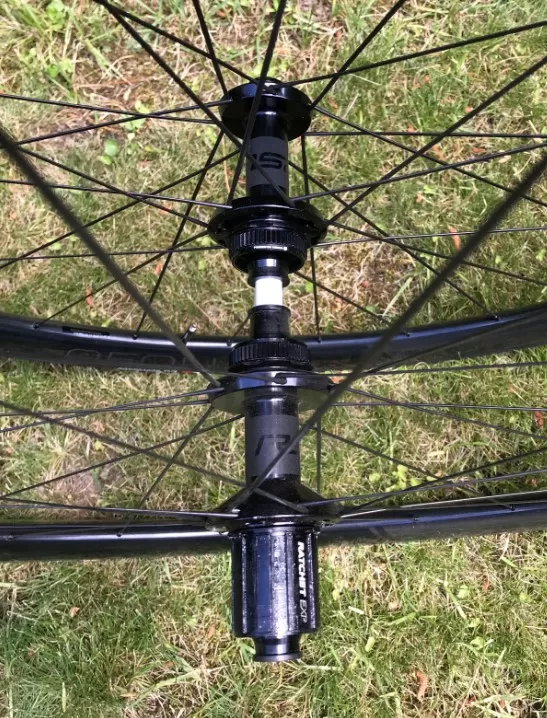 These wheels get an attractive glossy finish with black stealth logos. Also contributing to a skinny look and the low weight are the new DT Swiss 240 EXP hubs used on this wheelset. They roll a bit smoother than the last generation DT 240s, but their freehubs are a bit louder even after I regreased them. They’re not nearly as loud as Chris King, Industry Nine, or other hubs seeking attention, and DT Swiss hubs with a very similar design to the EXP have historically required next to no maintenance.
These wheels get an attractive glossy finish with black stealth logos. Also contributing to a skinny look and the low weight are the new DT Swiss 240 EXP hubs used on this wheelset. They roll a bit smoother than the last generation DT 240s, but their freehubs are a bit louder even after I regreased them. They’re not nearly as loud as Chris King, Industry Nine, or other hubs seeking attention, and DT Swiss hubs with a very similar design to the EXP have historically required next to no maintenance.
All in all, the Bontrager RSL 37 does a joyful job of its main purpose in life – climbing – and is a wheelset you can feel quite spry riding any day on rolling routes. Priced at US$2700, £2000, €2575, you can order them from Bontrager and Sigma Sports.
FULCRUM SPEED 25 – ROAD CLIMBER AND ALL-AROUNDER
The Fulcrum Speed 25 wheelset can serve two purposes for the road cycling enthusiast. It’s light and stiff enough to climb mountain roads, and its low-profile rims make it a suitable all-arounder for those riding in windy areas.
A smooth-rolling hubset, dead-quiet freehub, and ample compliance make the miles I’ve spent on the Fulcrum Speed 25 a real pleasure. My rides on this wheelset are more like low-stress outings than test rides.
High-intensity interval training, or HIIT workouts, seem less intense and less of a workout on this Fulcrum wheelset. It makes climbing steep mountain roads less about the effort I’m putting into climbing and more about the experience I’m getting on the mountain.
It’s almost as if the Fulcrum Speed 25 is the wheelset equivalent of “comfort food” for climbing and rolling around on my bike on any terrain.
Yet despite all of the pleasure I get riding the Fulcrum Speed 25 and my evaluation that it performs on par with the average of the climbing wheelsets we’ve tested, it doesn’t stand out for any one or combination of attributes beyond its smooth rolling and riding comfort.
It’s not as stiff as the stiffest climbers or as responsive as the most nimble ones. While this wheelset is certainly light at 1299 grams with a Shimano HG 11-speed hub on my scale, there are lighter and heavier ones in this climbing wheels category. And though my experience is admittedly more anecdotal than scientific, the Fulcrum Speed 25 has never been the fastest wheelset I’ve ridden up long, steep climbs in head-to-head comparisons against other climbing wheels.
Going downhill on the Fulcrum Speed 25 is a blast. With 28mm tires on its 21mm internal width rims, the cornering is confident, the ride comfortable, and the speed is as fast as you want to make it.
Yet at nearly 27mm deep, I’ll guess (since I can’t test) that you can’t go as fast as some of the others in this category that are 10-15mm deeper. On the flats, I don’t feel any aid from this wheelset in maintaining my speed above 20mph/32kph the way all-around wheels with a 45mm or deeper set of rims can provide.
Like all the wheelsets I’ve tested in the climbing category, including the deeper ones, this Fulcrum wheelset isn’t bothered by side winds, either on the flats or in the mountains. On the windiest days, I feel the high cross winds pushing my torso, but not this wheelset.
For some cycling enthusiasts, a light wheelset that climbs well, is unaffected by crosswinds, and is a real joy to ride on any paved road terrain is more important than having the fastest performer. If that speaks to you, this wheelset is worth considering.
With a retail price of US$2600, £2000, €2250 but available for less from some stores, you can order the Fulcrum Speed 25 wheelset at BikeInn.
BUT WHAT ABOUT…
Reviews of wheelsets only from Zipp, ENVE, Bontrager, Roval, and Fulcrum? I can imagine what you’re thinking.
Please don’t. I would love to share reviews of climbing wheelsets from DT Swiss, Shimano, Campagnolo, and a couple others.
Model changes, supply chain issues, or limited US distribution have made getting some of the latest models from these companies quite difficult. I’ll hopefully be able to test a few of these in the coming year when they are more available.
* * * * *
Thank you for reading. Please let me know what you think of anything I’ve written or ask any questions you might have in the comment section below.
If you’ve benefited from reading this review and want to keep new ones coming, buy your gear and kit after clicking the store links in this review and others across the site. When you do, we may earn an affiliate commission that will help me cover the expenses to create and publish more ad-free, subscription-free, and reader-supported reviews that are independent, comprehensive, and comparative.
If you prefer to buy at other stores, you can still support the site by contributing here or buying anything through these links to eBay and Amazon.
You can use the popup form or the one at the bottom of the sidebar to get notified when new posts come out. To see what gear and kit we’re testing or have just reviewed, follow us by clicking the icons below.
Thanks, and enjoy your rides safely! Cheers, Steve

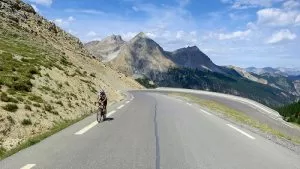
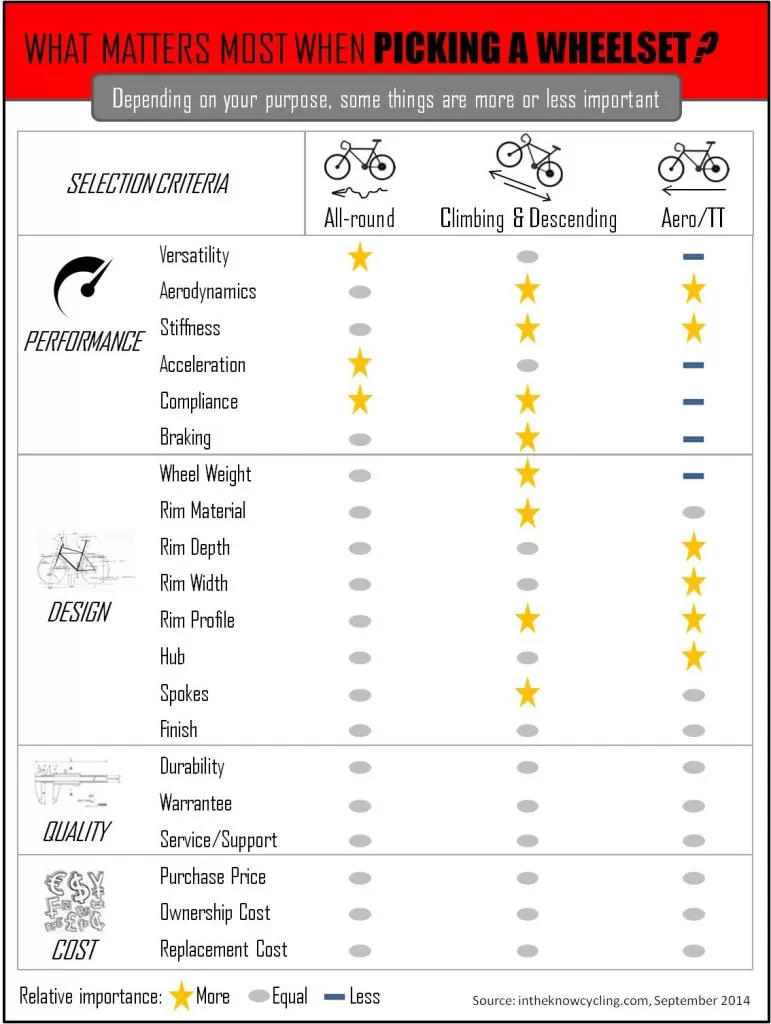
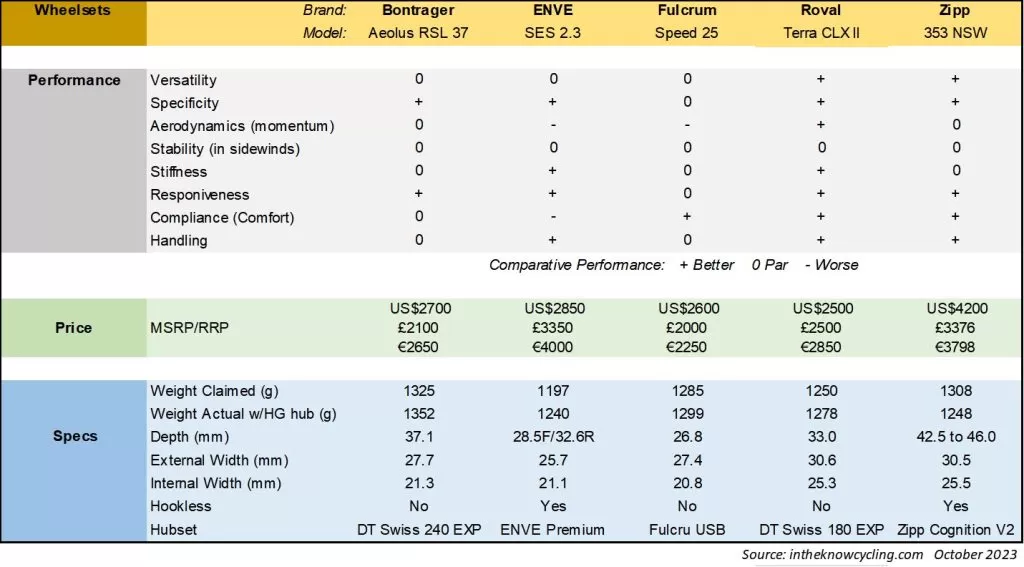
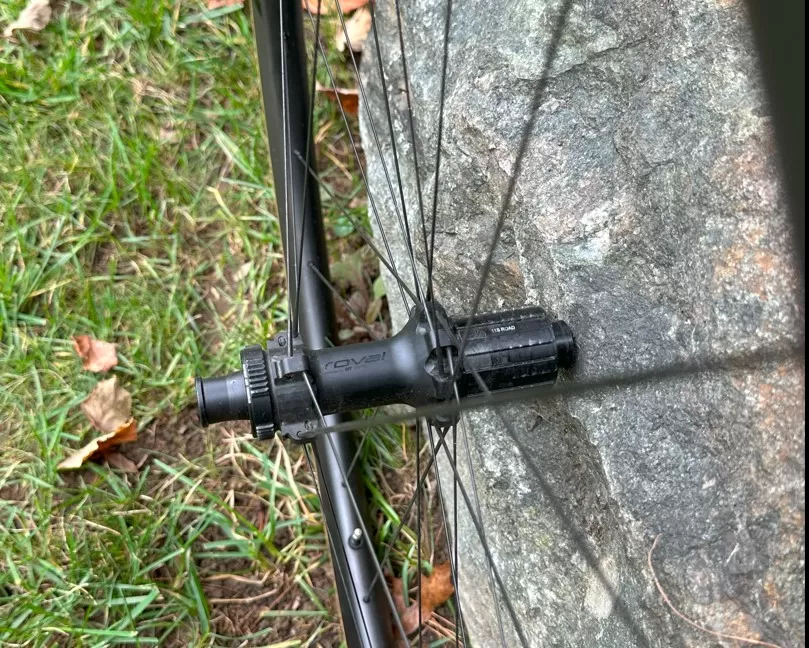
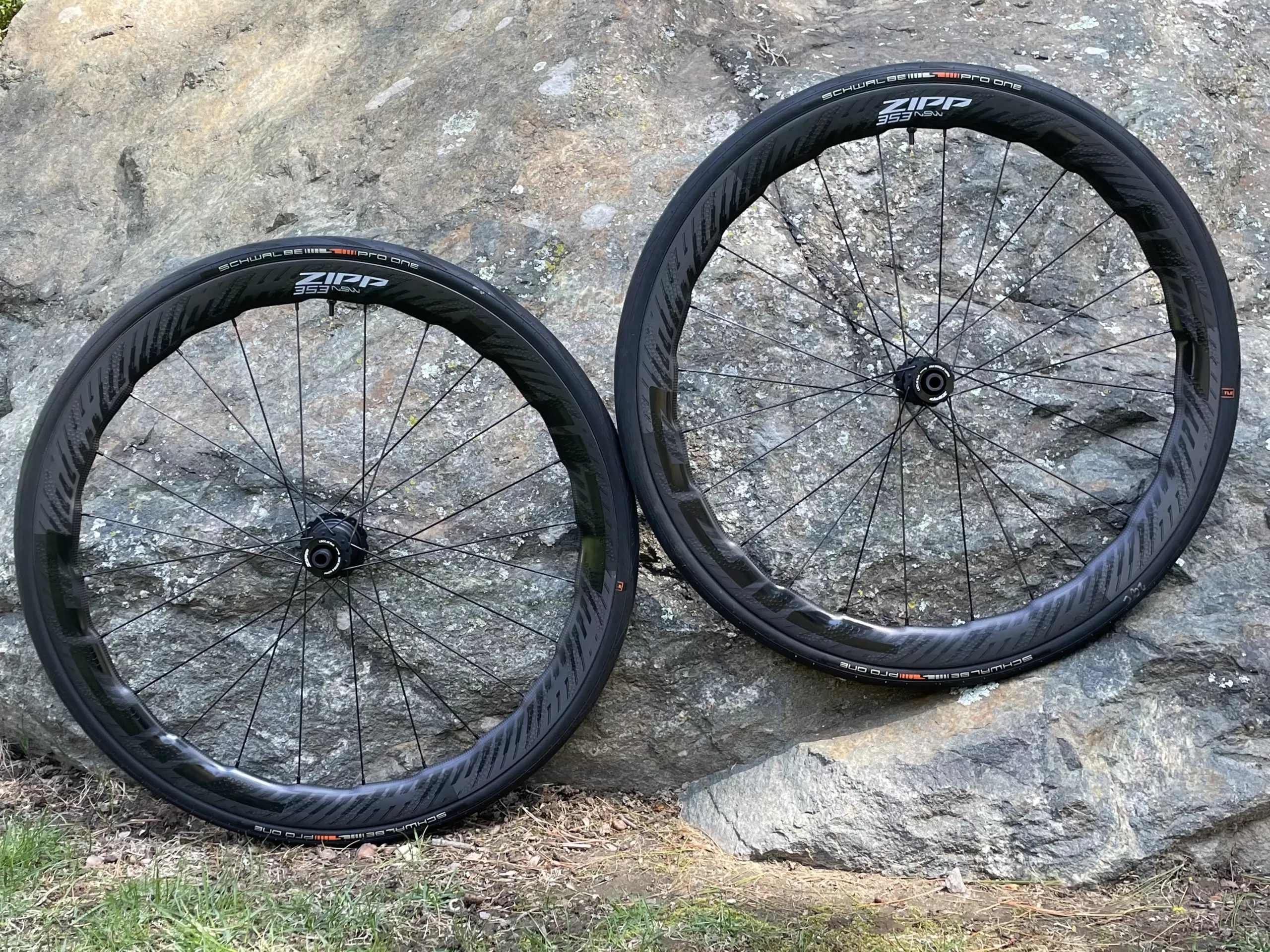
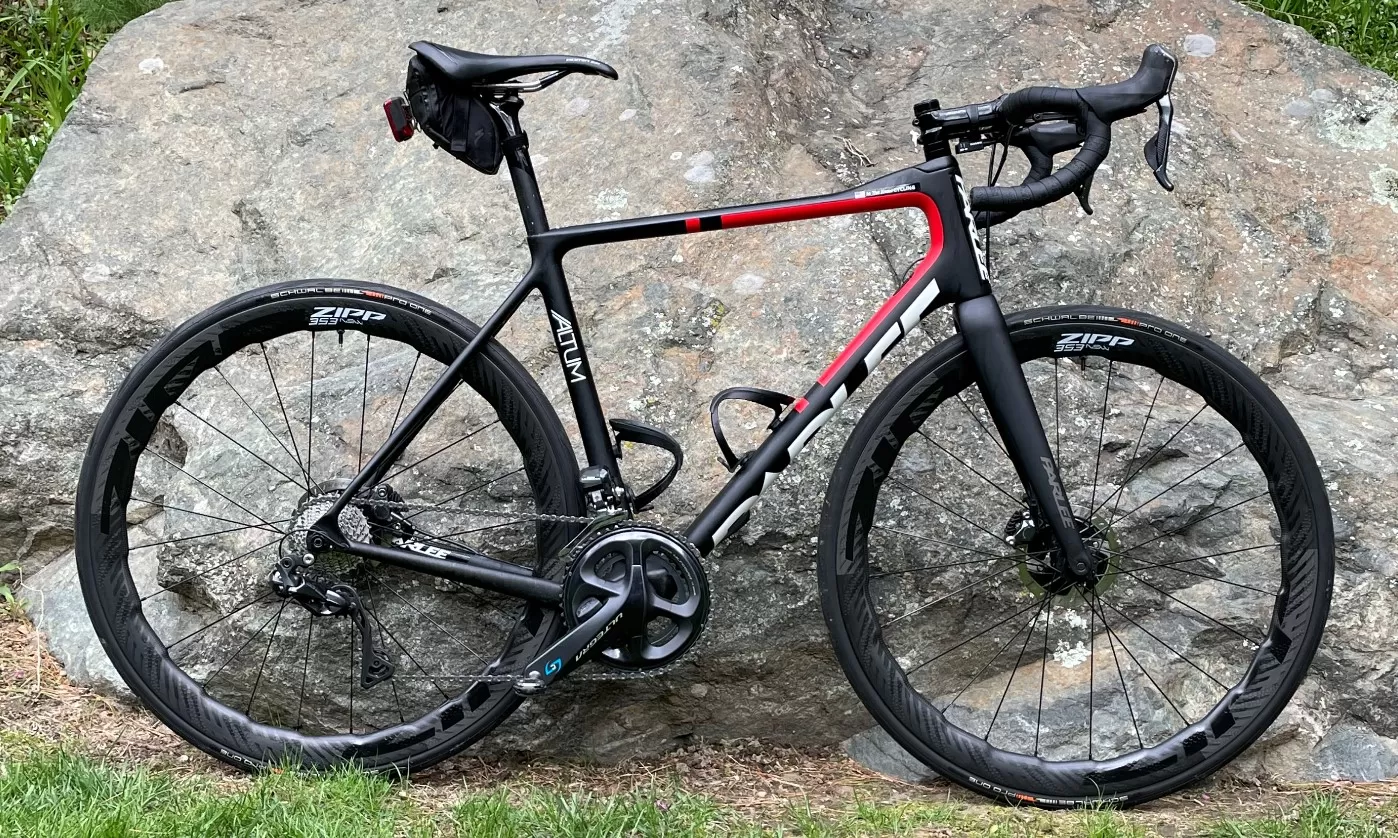
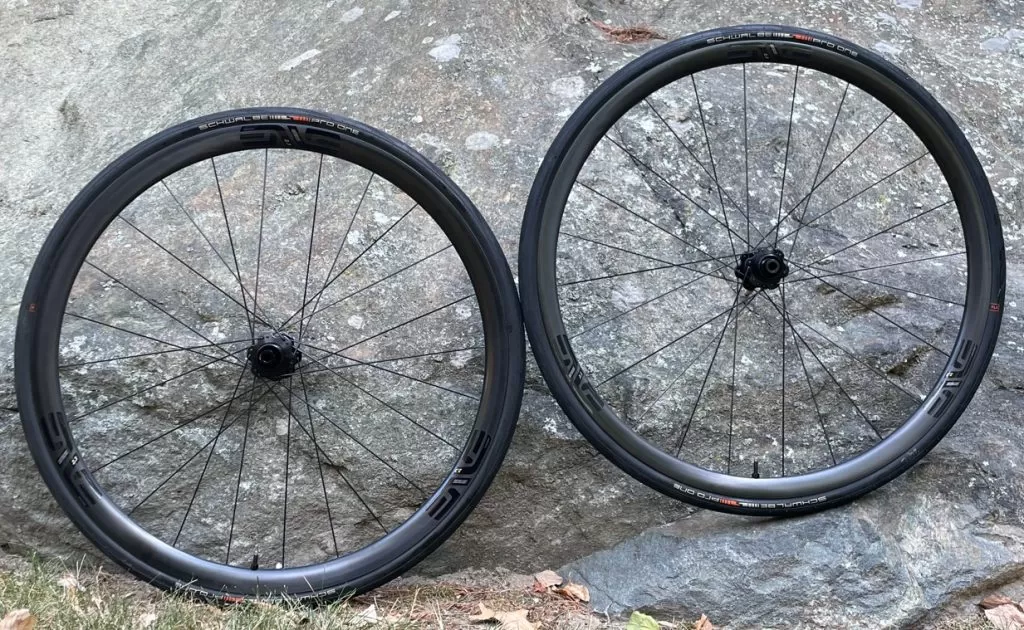
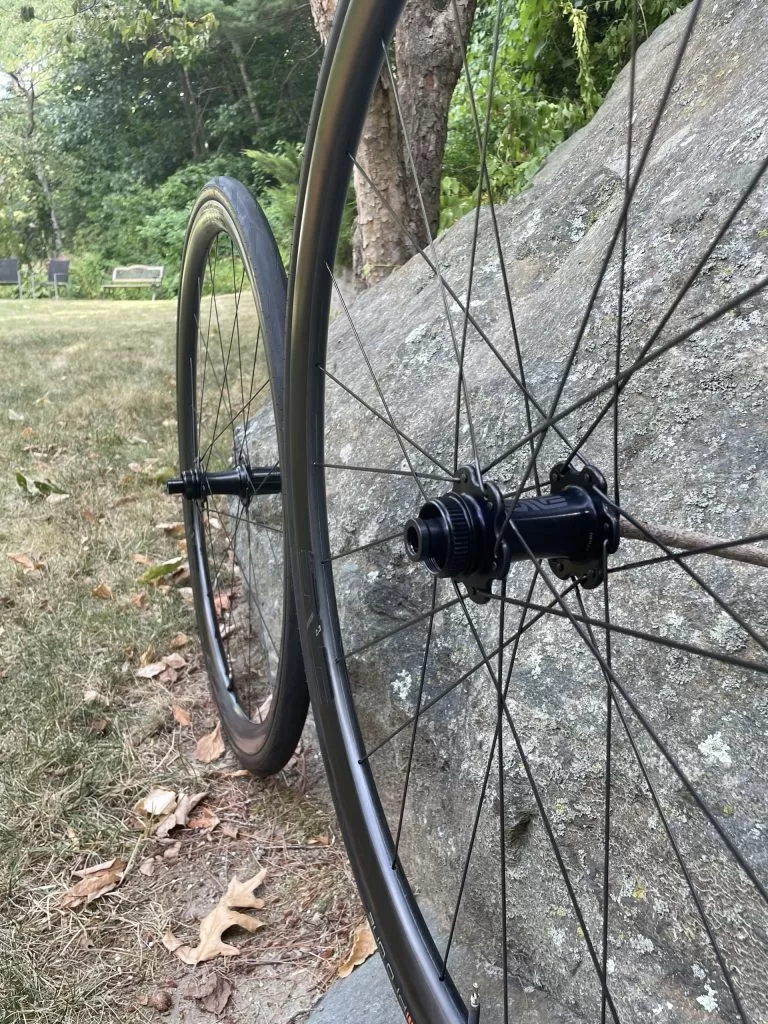
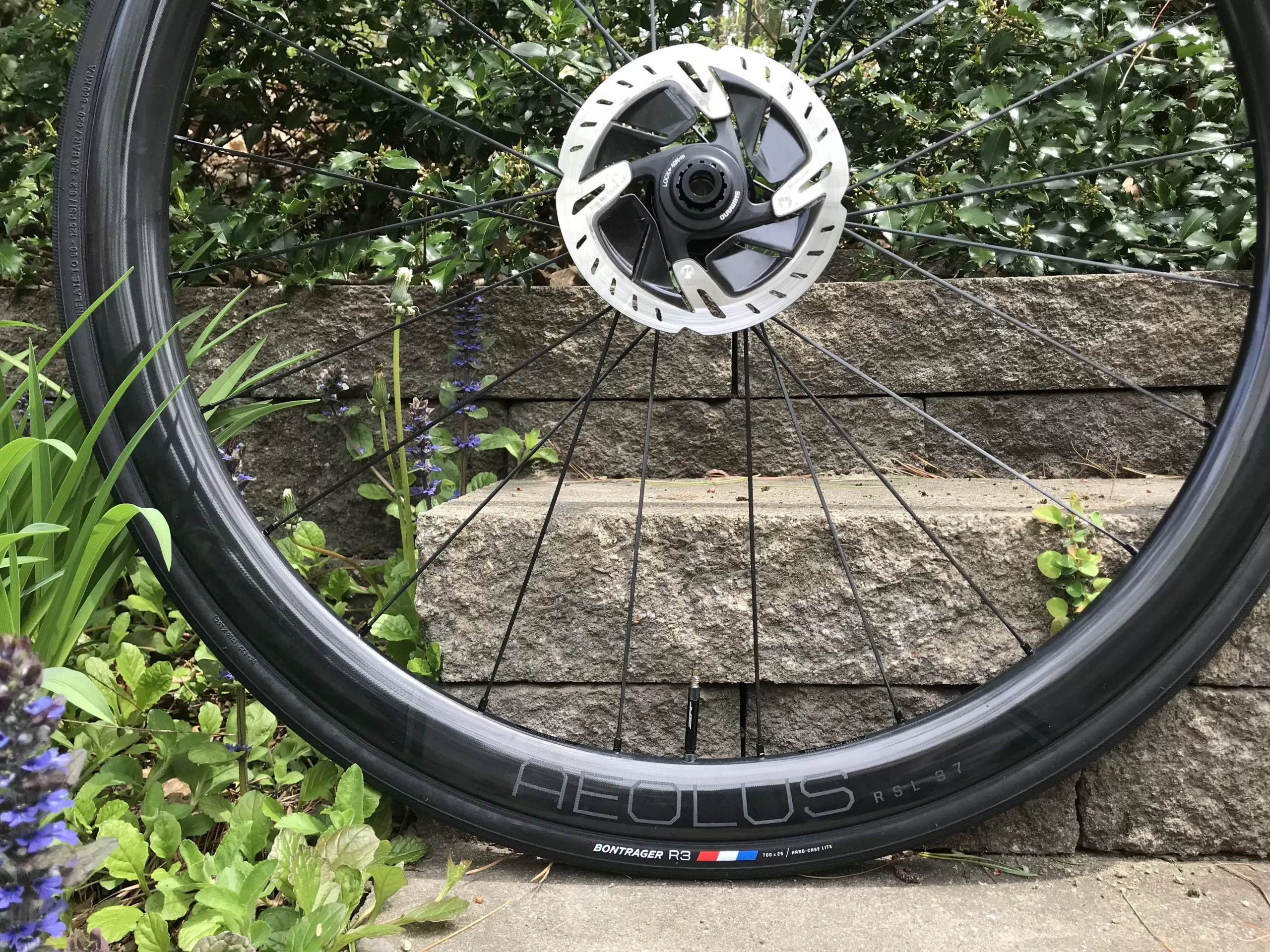

I saw a Youtube video where the new Zipp Firecrest wheels have inherited the same braking surface as the NSW, can you confirm? Would that make the Zipp FC a pretty good value compared to the more expensive Enve and Zipp NSW?
Max, Yes, the new 303 FC has the old 303 NSW rim including the brake track. It retains the 77/177 hubs and spokes from the last model 303 FC. Value is in the eye of the beholder (or perhaps the hand of the wallet holder) but I personally think that it’s a heck of a wheelset against its peers in its price range. My top rated US store Competitive Cyclist says they should have them in stock in a couple weeks. Steve
oops, replied to the wrong comment… for continuity stake, making a copy of it here:
Steve, thank you for the prompt reply. I just put a call to Zipp/SRAM and was told the 202 FC did NOT inherit the NSW rims, only the 303/404 (maybe the other large profiles, didn’t ask). What a bummer… from reading your VERY informative site… I felt like the ENVE 3.4 and the Zipp 202 NSW suit my needs, but they’re way more than I can afford. If the 202 FC had the NSW rims, it would have been perfect. ?
doesn’t mean it won’t happen… just that it didn’t happen now. the 202 is generally the last in the line to get updated.
Hi Steve. Thanks for the fantastic site- its my go to for all significant cycling gear purchases.
I have a very specific question-this August (2018) Im doing the haute route double (pyrenees/Alps). Im fairly light at 62kg and currently at 4w/kg. I have the current Enve 3.4 as tested here.
Would you use these for this event ?
Dave
David, thanks for you feedback and support. Unless you want to go with tubbies for even less weight, those are the wheels I’d recommend. Steve
Hi again Steve
Just to follow up I completed the Haute route double on the 3.4’s and they were fantastic. Very comfortable, great at high speed on the descents and excellent braking. I’ll use them again this year. The Enve pads held up very well. Ironically all the brake related dramas our team mechanic had to deal with were on disc brake bikes!
David, Great to hear. Thanks for your report. Steve
Hi again Steve.
After a year in the enve 3.4s I’m still really liking them but have found that in fact they are not very stiff and many others report the same. At only 61 kg I have to fully open the brakes to avoid rub on hard efforts. This is contrary to your own findings.
David, What brake calipers are you running? It may be that the calipers and wheels are not compatible. Wide wheels may not work well with certain vintage/model calipers. Are you getting rubbing in the front and/or back? It may also be that your rear needs to be trued up. Comparatively speaking, they are among the stiffest wheels. My 4.5 w/kg, 68 kg hill-climbing tester (Nate) and I (3.0 w/kg, 65 kg B-group rider/hill climbing sufferer) tested the wheels you see in this review and those with + stiffness ratings, including the ENVE 3.4s, were clearly in the stiffest group. Steve
I’m on an emonda slr with shimamo dura ace 9100 direct mount brakes. Only the rear rubs. At full open there’s several mm of clearance each side. Once it gets down to about 3 mm clearance they rub with every substantial effort when standing
David, So brakes/calipers shouldn’t be an issue. Check that the rear wheel is true, spoke tension is right, and that the QR is tight. Assuming you’re good there, there could be some flex contribution from the rear triangle. Emonda is a good frame but not as stiff as say a Tarmac (which Nate uses) or other race bikes. Here’s a good read on the topic https://www.bikeradar.com/features/lab-test-what-causes-brake-rub-the-wheels-or-the-frame/.
Might be worth looking back at your past experience here – always an issue with the 3.4 or more recent? what wheelset did you had before (stock ones with the bike) and what you noticed about those wheels? any brake or pad maintenance? I’d give ENVE a call too; they might have some better ideas and also have a great warranty if there is an identifiable issue. Steve
Thanks Steve all good points. I’ll check it all out. It’d be good to solve this as it’s a common issue amongst 3.4 owners. Three of us together going up a climb all had the wheels chirping away!
Another followup re the stiffness/ spoke discussion
I took the 3.4’s to a local wheelbuilder for a look. He tested the spoke tension and it was way down on recommended max tensions- about 80 (vs 120) drive side and 20-30 (vs 60 or so) non-drive side. This may well be the issue for everybody-especially those who buy outside the US ie with probably many months between manufacture and delivery during which time there is a settling process resulting in loss of tension.
There was about a 5 point difference (reduction) when the tyres were fitted and inflated to 70 psi which he has now corrected for and the tensions are at the recommended levels and the rubbing is gone. Mine came with Sapim CX spokes.
Dave
Hi David
I’m doing HR Alpes this coming August and just starting to wonder what sort of wheels I should use … I’m 56 kg and I’m worrying about carbon wheels that can delaminate ? I was thinking I should use alloy wheels for that reason but after reading STEVE s article maybe his recommendation of a CCC wheel might be ok ? Im a good climber but living in Perth Western Australia we don t have mountains and most of the gran condo that I’ve done in the past puts me in the not good descending category which will have me brake the whole descent which increase the chance of over heathing the rim ?
I would love to hear your thoughts !
And are you doing HR again this year ?
Thanks again
Nathalie
Hi Nathalie. Sorry I just saw your post. I’m also from Perth I’m in the Pyrenees right now on the Haute Route and will be going to be in the Alps also. Yes I would use the enves – I’ve brought them along again. They are very reliable and fast and the braking is very good. They barely heat up at all with proper braking technique. I think delamination is extremely unlikely. I did ask tge guys at enve who said they’ve never had a set of gen 2 3.4’s delaminate. Come and say hi in Megeve. I’m with the two wheel tours group
Hi Steve,
Thank you for all the work you do to keep riders well informed.
I live at the base of the Alps in Switzerland, climb regularly and, over the year, average about 500m climbing per hour and 25kph about 3.2kw/kg. I currently use Dura Ace C35 CC’s and am considering going with the “new” C40’s (actually the same) or switching over to Zip 303 NSW CC’s in order to get some more speed on the flats and avoid the tendency of the C35’s to grab at the alloy weld on braking – it shudders somewhat – I really don’t like that.
Considering this kind of riding, which of these two wheels would you recommend? Are there others that might be better for week long Alpine tours, hard climbs, long descents, occasional gravel roads and the potential for long flats in between – or is the C40 still the way to go?
Brian, I’d pick one of the wheels in this review over the two you mention. Steve
Got the ENVE SES 3.4 with DT Swiss 240 hubs – very pleased. Thank you!
Brian, Thanks for the feedback. Enjoy. Steve
Hi Steve,
Further to what I just wrote, I have an Emonda SLR8 with DA components, FTP around 260 and am 70kg. Price is not the consideration – equipment reliability and safety is.
Brian
Hi Steve,
Any opinion on the Reynolds Attack? Have you ever tried them?
Thanks
Rafael, Never tried them. Steve
Hi Steve,
Any advice on the DT Swiss Arc 1400 Dicut for climbing?
Thank you,
Juan
Juan, they make that wheelset in three depths but I wouldn’t consider even the shallowest of the three to be a climbing wheelset. It’s close to 1600 grams whereas most dedicated climbers will be 150 grams or more less. Steve
Thank you very much!
Juan
I recently stopped at a popular bike shop in Tenerife-those owners warned me to brake carefully as they had the last week five carbon rims which melted.Two of them were ENVE’s -these guys were not selling me anything-I was just there to have my bike tune up -but I personally had two ENVE’s delaminate about 10 years ago when the came out.They were extremely good in replacing the rims and I have not negative feelings towards the company but I wonder with this recent information is there something about ENVE which is not as mature as for instance Zipp or Shimano-I am a scientist and I am aware that my observations could absolutely have no statistical relevances but the Tenerife experience really scared me and I personally would not use an ENVE for long downhills
Hans, Every carbon rim will delaminate at some point if you brake them long enough with enough force. That’s just physics. The Tenerife bike shop owners and their experience with different wheelsets confirm this. If ENVE or some other name brand was delaminating more often than others, that would become widely known starting with forum buzz and likely including recalls. I am confident from the experience I’ve had with and the research I’ve done on the wheels in this review that they won’t delaminate if you don’t brake for excessive periods of time.
Earlier in this post in the section called What Carbon Clinchers are Today I outline what has changed in recent generations, how to brake carbon wheels, and suggest that if you are uncomfortable braking carbon wheels, you should go with alloy ones. Steve
I used ENVE 3.4s on a recent trip to Tenerife involving 400km riding, 13000m ascent in a week with no issues whatsoever.
I used the same 3.4s the month previously in Gran Canaria for a week with 300km riding, 10000m ascent on some rough roads & once again, no issues with braking performance.
I used some Roval CLX 32s on a recent 200km gravel ride & one of the rims cracked, thankfully crossing the finishing line!
Important to provide some important real life feedback & balance.
Great work on the article . Comprehensively answered my concern question in 72 seconds flat. Going to take my 50’s this year to France / Europe . way to old to worry about assent times. Cheers
An important note I wanted to add to the excellent information found here. I have a bespoke build pair of ENVE 3.4s with Sapim CX-Ray spokes & Tune hubs which came in at a staggering 1138gs. I also have a pair of the new 5.6s with CK hubs & think Tune hubs are lighter, superior roll & as yet, no maintenance requirements after a year’s hard riding. I like the set-up so much I have a pair of 4.5s being built with the same set up as the 3.4s & I am hopeful these will come in under 1200gs. By going bespoke you can go lighter, lighter still, achieve better performance & significant aero benefits.
Hi Geoff
Where did most of the weight saving come from – the spokes?
How are they in terms of stiffness? My stock gen 2 3.4’s are disappointing in that regard
Not sure David. Committed the sin of not weighing individual components but the Tune hubs look much more sleek than Chris Kings & would guess this would account for a chunk of the weight savings. It could be in my head but I believe the Tune hubs roll better too.
In terms of stiffness, superb. I use them on both an Emonda SLR & Colnago C64 & they compliment both bikes wonderfully. As noted in original comment, I also own a pair of 5.6s & the 3.4s lose very little in terms of stiffness. I also have a pair of 4.5s but have yet to ride these as my Girlfriend seems to have taken ownership of these!
Thanks Geoff.
I think I’ll re-spoke mine when I get home.
Yesterday the wheels got their ultimate workout with two long descents in the Pyrenees in freezing rain and sleet and the braking was just fine.
Hi Steve, great article. I am curious why the Enve 2.2 fell off as top climber performer?
Demetre, Quite simply, the 3.4 are better climbing wheels when compared to the 2.2 against my performance evaluation criteria. Stiffer, more aero, more responsive. The 2.2 are great wheels but I think ENVE learned from them to make the 3.4 better. Steve
Hi Steve
I’ve recently got a Cannondale Super Six Dura Ace that came with Cannondale Hollowtech Carbon clinchers. Just wondering if you had any views on these as I have an existing set of Mavic Cosmic Pro Carbon clinchers 40mm which I could swap them for. I have a trip to the Pyrenees coming up and the Hollowtechs seem quite light and look nice on the bike, but I feel that the Mavic’s seemed more responsive on my old Cervelo.
Thanks
John, Never ridden the wheels that came with your bike so hard to know. The Mavic Cosmic Pro Carbon SL UST (my review here) aren’t climbers per se so hard to suggest they’d be a better option. Stiffness is probably going to matter more than weight when comparing these. A light by flexy wheelset won’t transfer your power well going uphill. Steve
Help keep reviews and comments free of ads and bias by buying your gear through links on the site. Thanks
Too bad that the best performer wheel (Enve 3.4 AR) can not be matched with the best performer tubeless tire (GP5000). Any idea why Enve does not allow this combo? For me this is a showstopper.
Renzo, Note that I am recommending the ENVE 3.4 Disc best performer not the 3.4 AR Disc. The best performer GP 5000 TL (not the GP 5000 without the TL) works perfectly fine with the ENVE 3.4 Disc.
The 3.4 Disc is a climbing/all-around wheelset for paved road use and is most aero with 25C tires. 3.4 AR Disc is intended for mixed road and off-road surfaces. It’s has a wider, hookless rim and takes 28C and wider tires that should be run at lower pressures. ENVEs tests have shown that a few tires don’t stay on these rims at lower pressures without the hooks to hold them in place. You can see the current list of those they’ve approved and those that are not by clicking the Tire Compatibility section on the ENVe 3.4 AR page here. Steve
Hi Steve,
Thanks for the incisive article on climbing carbon wheels.
I ride hills (glacial morraine) all the time here in northern MI , and go to real mountains once a year for a bike vacation.
I have the Zipp 303 NSW wheels and they are some of the fastest wheels I have ridden, but they howl when braking hard . For example a stop sign at the bottom of a steep descent, which we have a lot of. When this happens the modulation also seems to get a grabby feeling.
Do the Enve rims do the same thing ?
I’m not ready to go to disc brakes yet and I have thought about going back to alloy or ceramic coated alloy rims because of this. I won’t give up my tubeless capability though.
Thanks for your articles, and I do support some of the on-line shops you mention.
Dave
Dave, thanks for your comment and for supporting the site. Really appreciate both. Rim brake wheels with textured brake tracks including the Zipp and ENVE will emit a sound when you brake them though I don’t think of either as anywhere near a howl. Perhaps check the set-up, make sure the brakes are toe-ed in. They should feel grabbier than smooth tracks because, well, they are slowing you more rapidly. I don’t mind either the sound or modulation, find the ENVE’s quieter than the Zipp, and have actually had people tell me they think the ENVEs sound “cool”. I wouldn’t go that far but everyone has their preferences. For example, some like the sound of King or i9 freewheeling hubs. Others, like me, prefer the peace of silent Zipp ones.
Textured brake tracks brake notably better than smooth ones in nearly every case where we’ve tried them. The only exception I’ll note is the Bontrager Aeolus XXX wheelsets which brake nearly as good. Personally, riding downhill or even on flat roads and especially on damp ones, I care a lot more about braking performance than brake track noise. Textured tracks is about the best way to improve carbon rim brakes. Disc brakes are the next step up. I also love the added speed of a mid-depth wheelset over a low-profile one and the strength-to-weight of carbon over alloy.
If you can’t take the brake noise of the Zipp NSW despite its other benefits, I’d look at the Bontrager Aeolus XXX 4 or 2 as options that give you many of the same performance benefits, brake almost as well and but are quieter. There’s a review of the 2 in this post and the 4 in my all-around post, both with links to the Bontrager store that provides us a small commission that helps you support ITKC. Cheers, Steve
Steve, wondering if you have heard or know anything about Next Cycling Wheels. the carbon rims are made in China but the wheels are hand built in the USA. The Quick Disk is 19.5 mm internal width, 25mm external, comes with DT Swiss 240 hubs.
The specs compare favorably to the wheels you have reviewed here and price is competitive as they only sell direct. Any thoughts will be greatly appreciated as I am seriously considering .
Kenneth, I’ve not heard of them. There are many, many businesses selling wheels that follow the same model as the one you’ve found. I wrote this post describing what these branders and other types of businesses selling lower-priced carbon wheels are all about. It’s one of the most-read posts on the site. I encourage you to read it before buying anything. Steve
Steve,
Trying to decide on the zipp 303nsw v the 202nsw. You rated the 303 as best in another article but the Enve’s better than the zipps above. I do a lot of climbing but want to have some aerodynamic assistance on the flat.
Thanks. Chris.
Chris, 303nsw over 202nsw. Unless you are doing the kind of long, steep climbing described in this post that is best on climbing dedicated wheels, you don’t want to sacrifice aero performance of deeper wheels. Steve
Steve, appreciated and that makes sense. If I could ask one more question in this regard. Your comparison noted that the braking on the 303 firecrest was neutral v’s good for 303 NSW’s. Was this just as it was before the Showstopper braking system had been flowed across to the Firecrests? Just checking as I am trying to justify the price difference between the Firecrests and the NSW’s as it is significant. Thanks again.Chris.
Hi Chris, Both have the Showstopper and I rate the braking of both +. This table and the reviews that accompany them can give you more comparisons and help you decide between them. https://intheknowcycling.com/carbon-road-bike-wheels/#Reviews. Also look at my FB or Twitter post from last Wednesday about particularly good sales going now on Zipp wheels. The links in the post I just referenced should also take you there. Cheers, Steve
Would you buy the Fulcrum Racing Zero Carbon (with AC3 brake track) over the Bontrager Aeolus XXX 2?
Nick, they each have the performance pros and cons as you can see in the chart. It depends on what’s more important to you and whether you’d be willing to pay more for one if it’s more expensive and has more of what you want. Personally, the Fulcrum’s rim width and inability to run them tubeless is a turnoff especially if you’ll be riding on rougher roads. On the other hand, it is competitively priced and pretty stiff which would be important if you are a bigger or stronger rider. Steve
Hi Steve, thanks for the in-depth reviews. I’m more of ‘Moose’ type (187cm and 85kgs) and am looking for some stiffer, lower profile wheels for poor roads, hills and wind. Just wondering if you could channel your inner Moose and give your thoughts on the 3.4 AR disc vs 303 disc for bigger guys. Thanks
Chris, Both of those would be stiff enough for a heavier rider and wouldn’t be the reason to choose between them. Steve
Hi Steve,
Have you get a chance to review the new Roval Alpinist? Curious how it’s compared with Enve 3.4 Disc
Edison, thanks, I’ll put it on the wish list. Steve
If you had to choose between the Zipp 303 firecrest or the campy bora WTO 33, which would you pick (light rider who likes to climb in the Ardennes and Alps)?
Firecrest.
Thanks! Should I be afraid of crosswinds (small 60kg rider)?
At the moment I own the DT Swiss ERC 1100, but I find them a bit too high for windy days, espacially in the mountains on long descents.
Do you think the Firecrests will be more stable or do you have other recommandations in this case?
Thanks.
Kerim, No, at 40mm deep and with their rim profile, crosswinds will not be an issue with the Firecrest. None of the wheelsets in this review have difficulty in crosswinds. Steve
Quick question about the Bontrager: You said “As with any other wheelset this wide, you could… mount up 28C tires. Wider tires would add a good deal more weight and further diminish your aero performance…” Does “wider tires” here include 28C, or do you mean wider than 28? Just wondering about their performance at that width vs 25. Thanks!
Yes, I’m talking about 28C size tires when mentioning “wider tires.”
Steve, I have 2 bikes, older SL4 Tarmac running on Fulcrum Racing Zero Competitione (alloy) with Cult bearings and a recent Specialissima on new WTO 45 with USB bearing. I am considering of letting the SL4 go and get another bike – perhaps more aero, for a longer flatter rides., while keeping the Specialissima more for hilly rides. We don’t have too many high altitude routes, average are about 500-700m within 50 to 70km loop. Flatter routes would be less than 150m elevation within 150km loop.
I wonder if Enve 3.4 would benefit me to go with my Specialissima and keep the WTO 45 for the incoming bike or would you have other suggestion. Appreciate to hear your opinion.
Azwan, I’d suggest you consider something deeper and more aero for your flatter routes. I’ve reviewed and recommended the ENVE 5.6 in this review. Your hilly routes don’t sound like they’re steep or long enough to really benefit from a lightweight wheelset like the ENVE 3.4. Steve
Many thanks, Steve. Azwan
Your articles are greatly appreciated. I’ve been in the market for a carbon tubeless wheelset for a Checkpoint and narrowed it down to the 303 Firecrest or the SES 3.4 AR. Finally ordered the SES. I was sold on the Zipp Tangent based on your article and previous experience with Hutchison tires. Since Zipp discontinued these tires I can’t find any. The only Hutchison listed in the Enve compatibility list doesn’t get good reviews especially on wet surfaces leaves me in a void for the definitive tire. In addition to your list of most important tire qualities I think puncture resistance and longevity is also important which the Zipp tires were also good for. What would be the next best choice. Wheels should be here in less than a week. Thanks!, Craig
Craig, Don’t have a quick answer for you beyond what I’ve written in my current tubeless tire review. We’re in the process of testing out some additional ones now. Hope to have a further update in May. Steve
Have a set of Bontrager RSL 37 on a 2020 Trek Domane SLR 7 running Bontrager R3 tubed 28mm tyres @ 80 psi. The RSL 37 replaced the Aeolus Pro 3V wheelset which comes as standard on the Domane.
The difference is amazing. The Domane comes alive, far more responsive, road feel is MUCH better, 10% faster on the flat, my climbing has improved in as much as more confidence and the lighter wheelset.
I can attest to your observations in your review, there wheels are just brilliant!
If you hadnt already worked it out, I love these wheels.
They dont seem to get much love except from Trek riders, but they do deserve strong consideration. For me in Oz the Enve SES 3.4 were 20% more expensive (are they a 20% better wheel??)